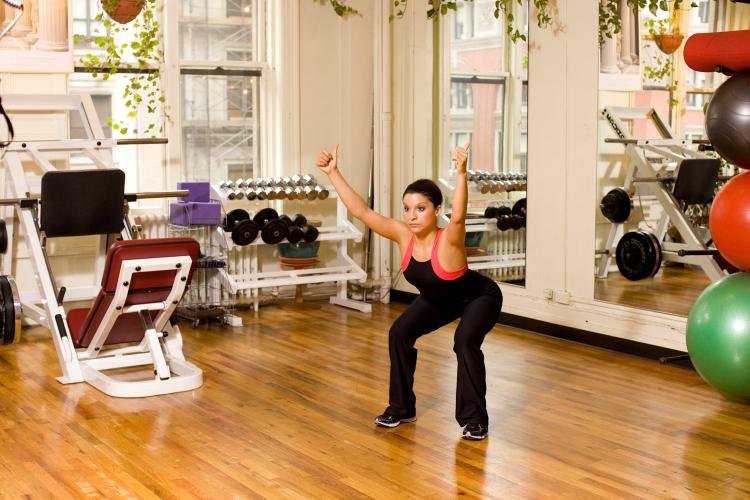The squat is an essential movement for most training programs because it is used so frequently in life (every time we move from or to a seat, we are basically squatting). When performed correctly, the squat can help strengthen our legs, our core, and postural stabilizers.
Many people avoid the squat in their training routines for a variety of reasons. Some are afraid to hurt their knees, some are afraid to hurt their backs, some feel it is too difficult, and some are afraid of getting big thighs. These fears are all warranted when considering how often people perform squats incorrectly. In actuality, well performed squats will help prevent pain and injury in both our backs and knees, as well as slenderize our thighs (or build them up) depending on the tempo, length of time under tension, and weight we are lifting.
Technical Breakdown
To begin, stand tall, with your feet shoulder width (a bit wider) apart. You may keep your feet parallel to each other or angled out about 45 degrees. Keep your weight centered on all four corners of your feet, ensuring that your are not rolling your ankles in or out.
Draw your navel toward your spine and tip your hips back toward your heels, sticking your buttocks out. Slowly lower your hips toward the floor while keeping your weight in your heels. Although you are lowering your hips toward the floor, keep lifting your tailbone toward the ceiling so that you maintain an extended spine throughout the squat. Keep lifting up through your abdominal and back muscles so that your body tips forward (toward thighs) minimally.
As mentioned above, maintain a slight arch in the lower back. Often, people compensate by flattening out their lower back or tucking their pelvis under. This is not great for the health of your spine, especially if you add a load to the squat (ie, lift a box or weights).
Tips:
Be sure to keep knees pointing in the same direction as toes.
Be sure to keep head aligned with shoulders.
Be sure to keep hips square. Some people have one side that is significantly tighter than the other side. This will cause postural imbalances.
Breathing pattern, how much weight you are holding, tempo, and number of repetitions you perform the squat depend on what your body can handle and what your goals are. For best results, to contact a fitness professional to help you design your program.
The Epoch Times fitness team is made up of experienced certified personal trainers. If you have any fitness questions, feel free to contact the editor at [email protected]








Friends Read Free